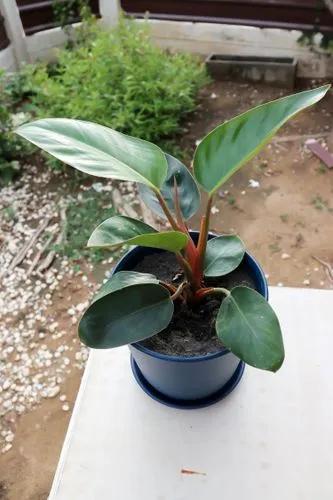Variegated hostas have white, cream or yellow in their leaves that may look like solid patterns, blotches or stripes. ‘Marginate’ variegation is when variegation occurs on the margin of the hosta’s leaves. ‘Medio Variegation’ is when variegation is in the center of the hosta’s leaves.
Hosta Care
Variegated Hosta



Hosta variegation is caused by mutations of cells in one or more of the layers of the leaf. This is caused by variations in organelles within the plant cells, which are called “plastids.” Plastids contain different colored pigments and largely determine the color of leaves. Chloroplasts containing chlorophyll are green. Plastids can also be orange, red, yellow, brown, whitish to colorless. When a mutation occurs, the normal ratio of plastids is rearranged. Some colors become more abundant, and the leaf takes on a variegated look.
Not all hosta mutations are stable (they can revert back to their previous pre-mutated state, or they can continue mutating).
An unstable mutation can be affected by environmental factors like sunlight and fast growth, which can change the quantity and proportion of plastids in the cells.
For example, white variegated hostas have minimal amounts of chlorophyll
In full sun the chlorophyll levels can increase and cause the leaves to pick up a green cast and appear less variegated
How to Care for the Plant

Water

Like many perennial plants, watering a hosta deeply will be imperative - on average, they require about an inch (2.5 cm.) of water each week. by establishing a weekly watering schedule, plants can develop a more robust root system that is better able to access water deep in the soil.

Pruning

Never remove more than a third of the foliage in any one year and to cut just above a node on the stem.

Fertilizer

Use slow-release fertilizer. Avoid using too much fertilizer.

Sunlight

Part-shade/Semi-shade location.

Soil

Planting instructions will suggest planting in a sterile potting mix.

Propagation

When desired, you can divide the plants in early spring or in the fall by digging up the root ball, dividing it into small clumps of roots and leaves, and replanting. The plant propagates very easily, though it can take some hard work to divide the tough root clumps.

Temperature

If you keep your hostas outdoors, you have to prepare for winter. Hostas are hardy plants and will survive the winter, but they’ll have a better chance of thriving if you prepare them for the colder months. After the ground freezes, cover the ground around the hostas with fallen leaves, and pack more leaves around the crowns of the plants

Container

Whether it be plastic or clay, make sure the pot you select has drainage holes in the bottom to prevent over-watering.

Additional

Mulch is an excellent way to make the most of your watering and to reduce weeds. It is important not to mulch too deep,especially right next to hostas. One to two inches of mulch is adequate and the mulch should be several inches away from the hosta crown and shoots. Mulching up to the stems is not good for the hostas.

Popularity

1,427 people already have this plant 331 people have added this plant to their wishlists
Discover more plants with the list below
Related articles






